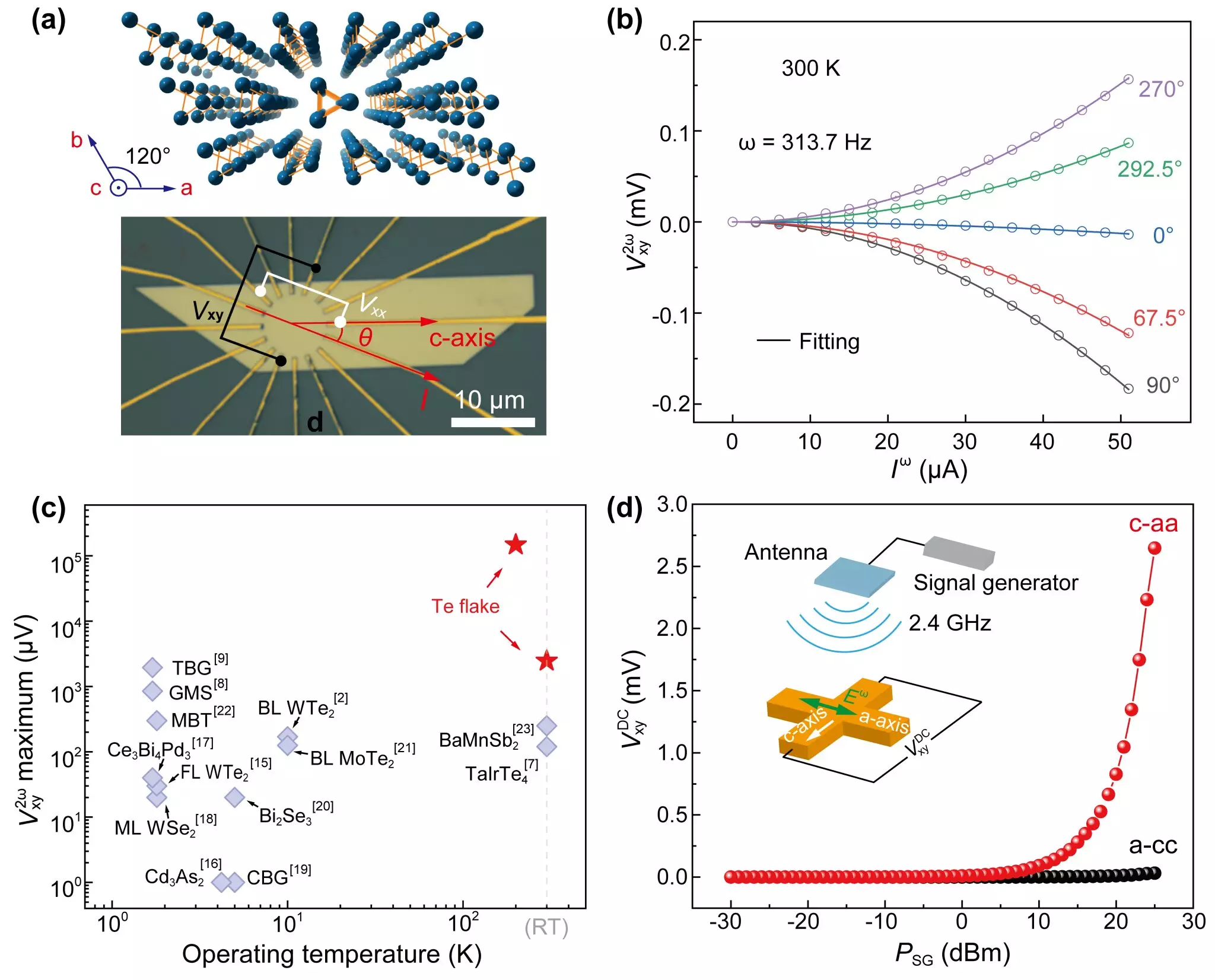Recent breakthroughs in solid-state physics have unveiled remarkable nonlinear Hall and wireless rectification phenomena in elemental tellurium (Te) at room temperature, as documented in a pioneering study published in *Nature Communications*. These findings mark a significant advancement in the study of semiconductor materials, particularly in relation to nonlinear Hall effects (NLHE). Conventionally, NLHE has garnered attention due to its potential applications in high-tech devices, including those reliant on frequency doubling and energy rectification. Historically, the practical application of NLHE has been limited by challenges such as low Hall voltage outputs and operating temperatures, which have hampered the integration of such phenomena into viable technologies.
Prior implementations of NLHE had only been successfully observed in specific materials, notably in Dirac semimetal BaMnSb2 and Weyl semimetal TaIrTe4. However, these materials suffered from inherently low voltage outputs and a lack of tunability. A team of researchers, led by Prof. Zeng Changgan and Associate Researcher Li Lin from the University of Science and Technology of China, took it upon themselves to explore alternative semiconductors showcasing remarkable NLHE capabilities. Their pivotal choice of study centered around tellurium, a narrow-bandgap semiconductor defined by unique one-dimensional helical chain atomic structures. This particular configuration, which breaks inversion symmetry, positions Te as an optimal candidate for realizing significant NLHE at room temperature.
The researchers successfully demonstrated a substantial NLHE in thin flakes of Te. Remarkably, they achieved tunable Hall voltage outputs, influenced by the application of external gate voltages. At a temperature of 300 K, the team recorded a peak second-harmonic voltage output of 2.8 mV, a notable order of magnitude increase over prior records. This enhanced performance is linked to intrinsic physical characteristics of thin Te flakes, particularly the surface symmetry breaking that occurs within the flake structure, which has been determined to significantly impact the observed NLHE.
Wireless RF Rectification: A New Frontier
Taking their research a step further, the team transitioned from employing alternating current (AC) to utilizing radiofrequency (RF) signals, successfully achieving stable wireless rectification in the Te thin flakes. This innovation enables a rectified voltage output across a wide frequency range of 0.3 to 4.5 GHz. The implications of this development are profound; unlike traditional rectifiers that depend on p-n junctions or metal-semiconductor junctions, the newly developed Hall-based rectifier leverages the inherent properties of tellurium. This contributes to a broadband response, rendering it highly viable for applications in eco-friendly energy harvesting and wireless charging systems.
Broader Implications and Future Directions
The insights gained from this study not only enhance the understanding of nonlinear transport phenomena in solid-state materials but also tap into the potential for developing next-generation electronic devices. By elucidating the mechanisms behind NLHE in tellurium, this research paves the way for innovative advancements in semiconductor technology and energy-efficient systems. The contributions of the research team herald a promising future, with vast implications for sustainable energy solutions and cutting-edge electronic applications, underscoring the significance of exploring unconventional materials in the relentless quest for technological advancement.


Leave a Reply